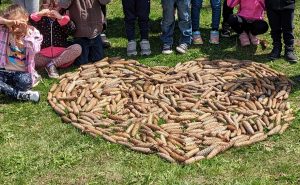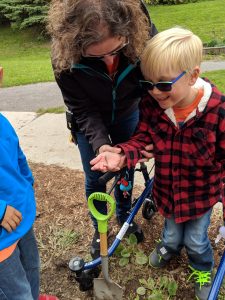Are you and your students anxious about the future of life on earth? The term eco-anxiety applies to those of us whose feelings of dread, anxiety, and depression are associated with climate change, mass extinction, pollution, plastic islands, depletion of the earth’s resources, the water crisis, and other ecological issues. We can help ourselves and our students to cope with these feelings in several ways.
Part 1 of this blog examines appreciating nature and getting outside to learn.
 Go Outside and Observe
Go Outside and Observe
Plan a variety of teaching opportunities outdoors. Fresh air, sunshine, snow, mud, and rain give us exercise and vitamin D with the bonus of the chance to observe the seasonal cycles, the water cycle, habitats, plants, and all sorts of animals, including insects. You will need to prepare for the weather, but I believe this will reduce student anxiety about the natural world just by spending time outside appreciating the gifts of this planet. Specific learning expectations in every grade from K-8 require students to be outside. When it’s part of the class routine to take a walk together or adopt a nearby tree, plant, or garden, students will likely gain more respect and understanding of the natural world. Bring cameras outside to create media. Take time to write, draw, paint, and create drama or music outdoors. The outdoor setting is a beautiful place to let the artistic side emerge. Respectfully using natural materials is a fantastic way to work together and be creative.
Go Outside and Learn
Your schoolyard is a habitat, no matter where it is located. It’s in a weather zone; it’s on a waterway; it’s a food source for something, even if you are in a concrete jungle! Explore the nooks and crannies of cracks in the pavement. Watch the skies for birds and other insects. You will find many opportunities to cover the curriculum right outside your door. Any subject for grades 1-8 and any of the four frames in the kindergarten program has components that you can cover outdoors. If your school does not have an outdoor classroom, that’s ok! You can do plenty of teaching with students using cameras or clipboards for making observations, calculations, mapping, or art. You can set up a nature-based inquiry by asking students to compare the characteristics of trees and animal habitats or make detailed weather observations. Always ensure outdoor learning is accessible to all students, and have fun!

